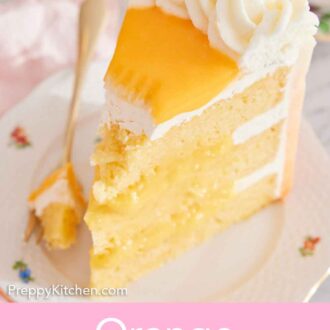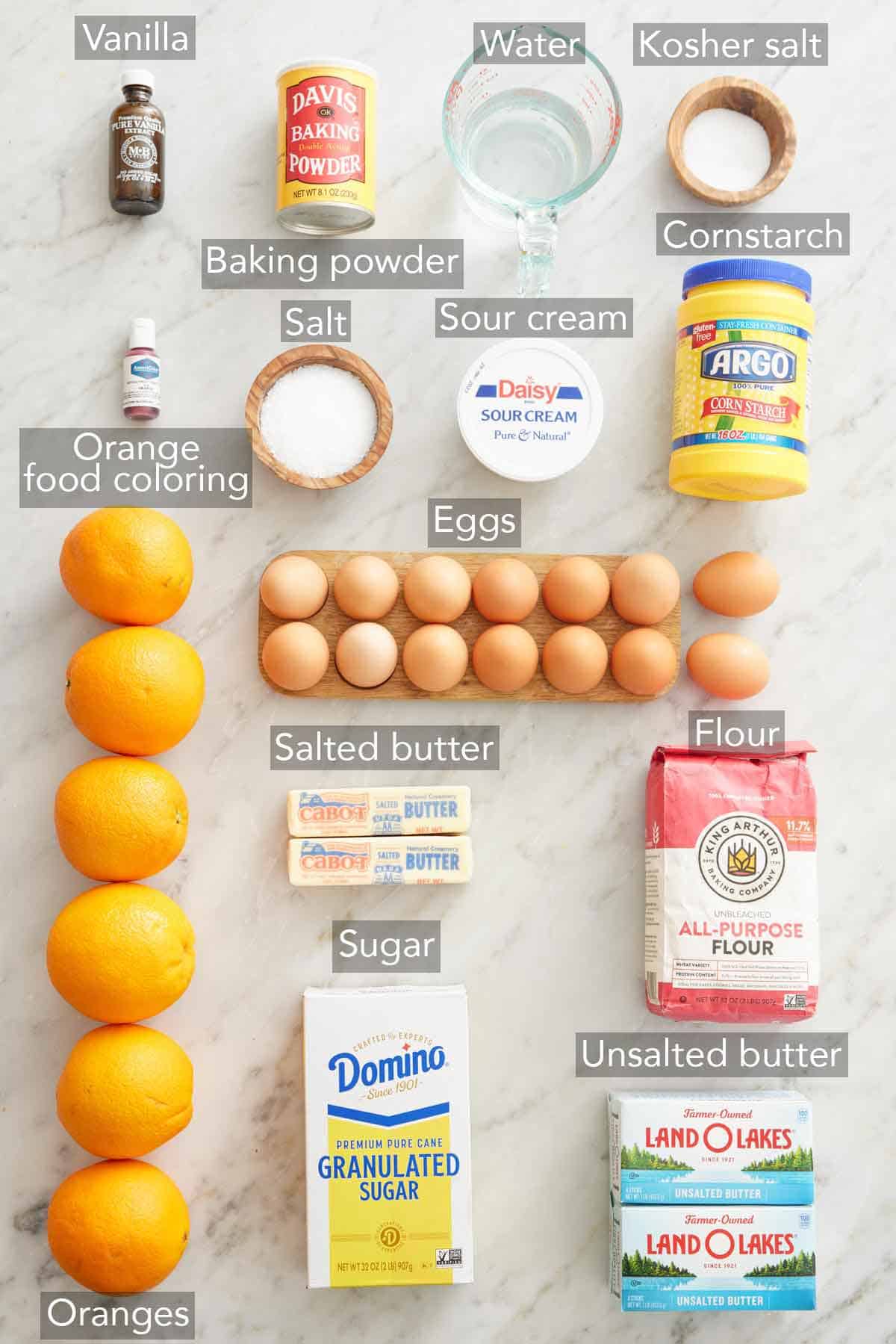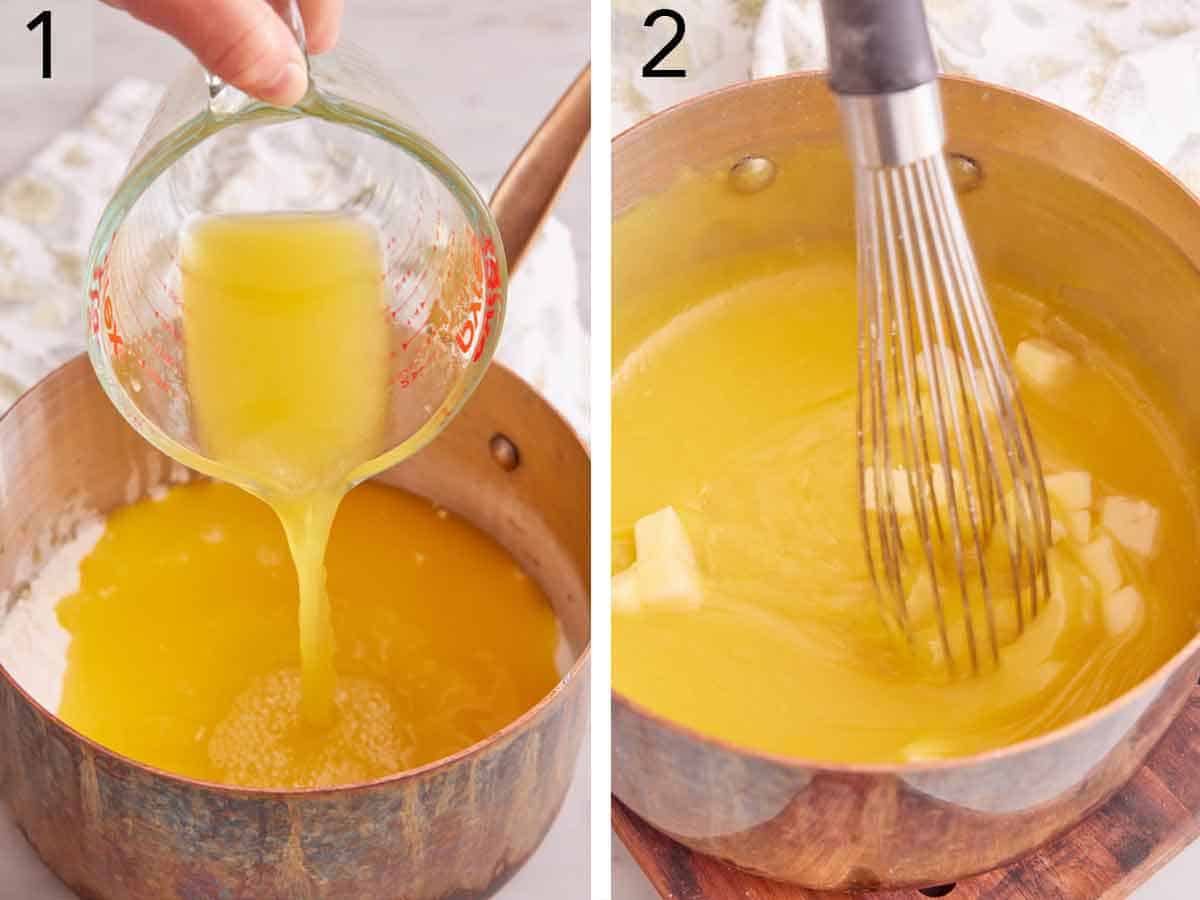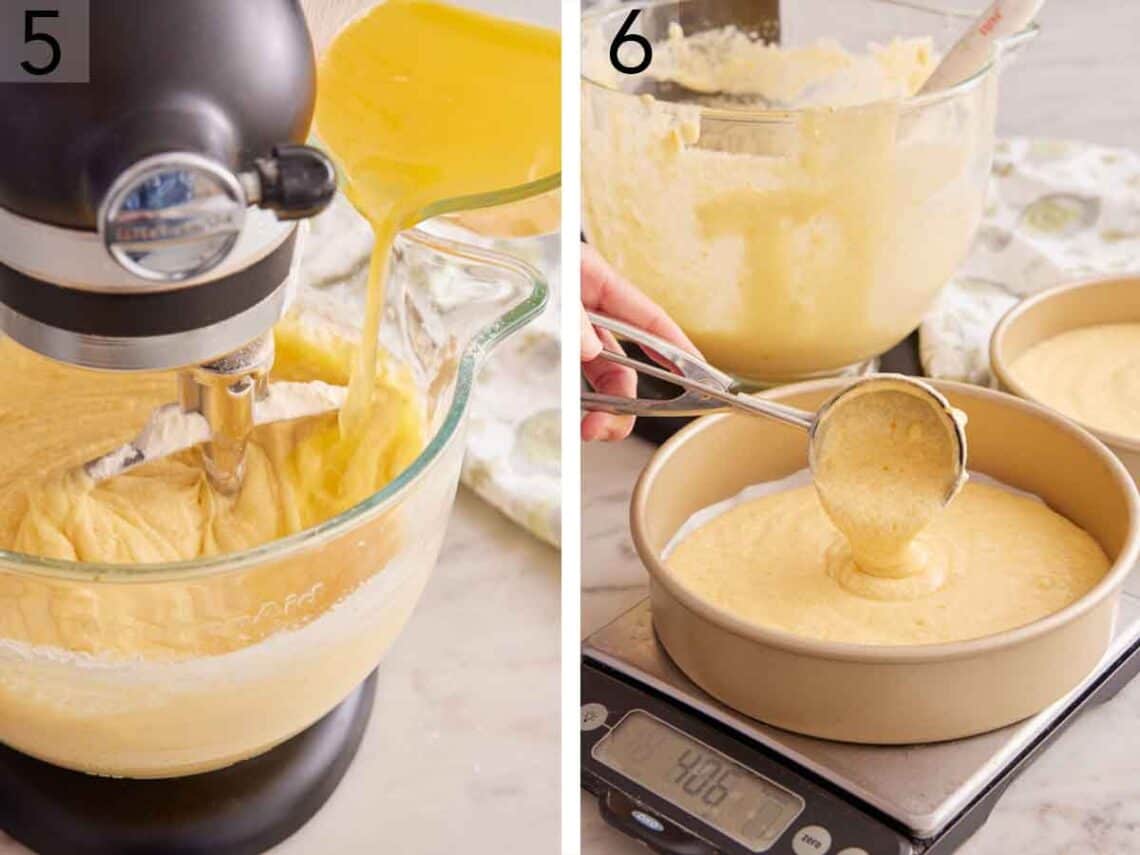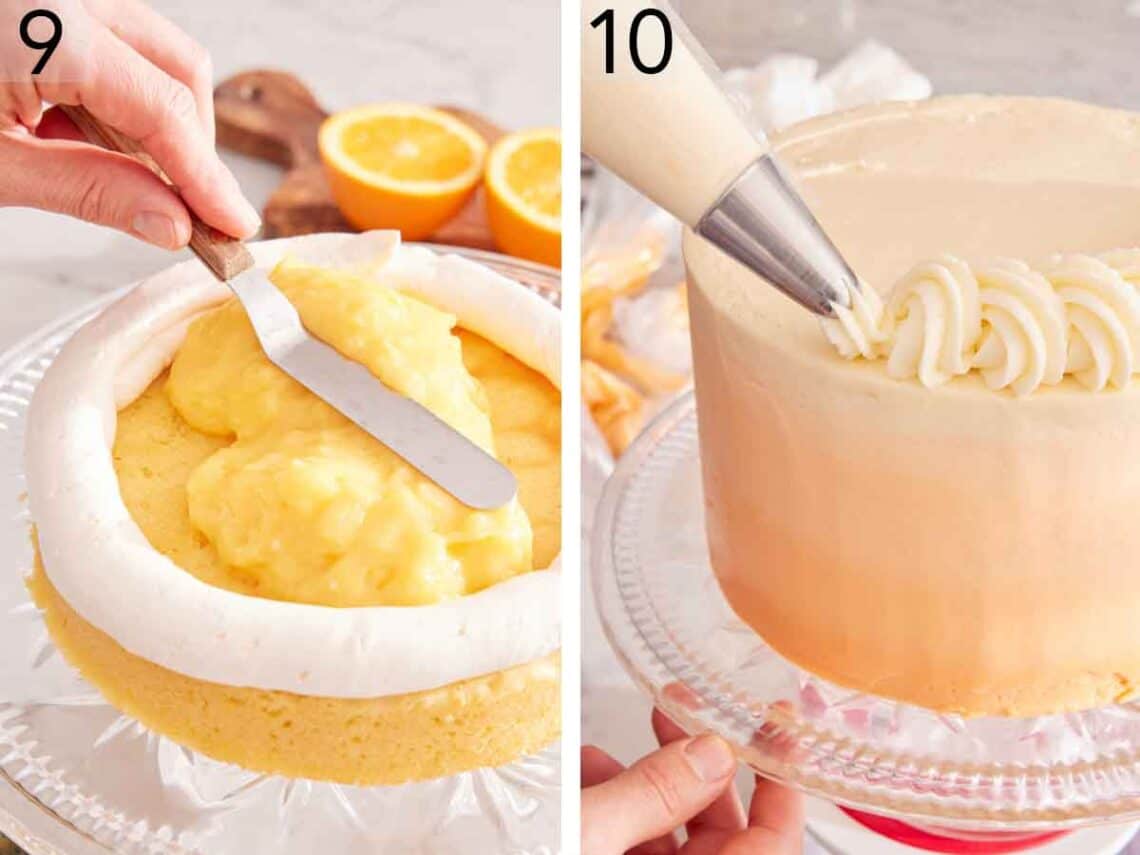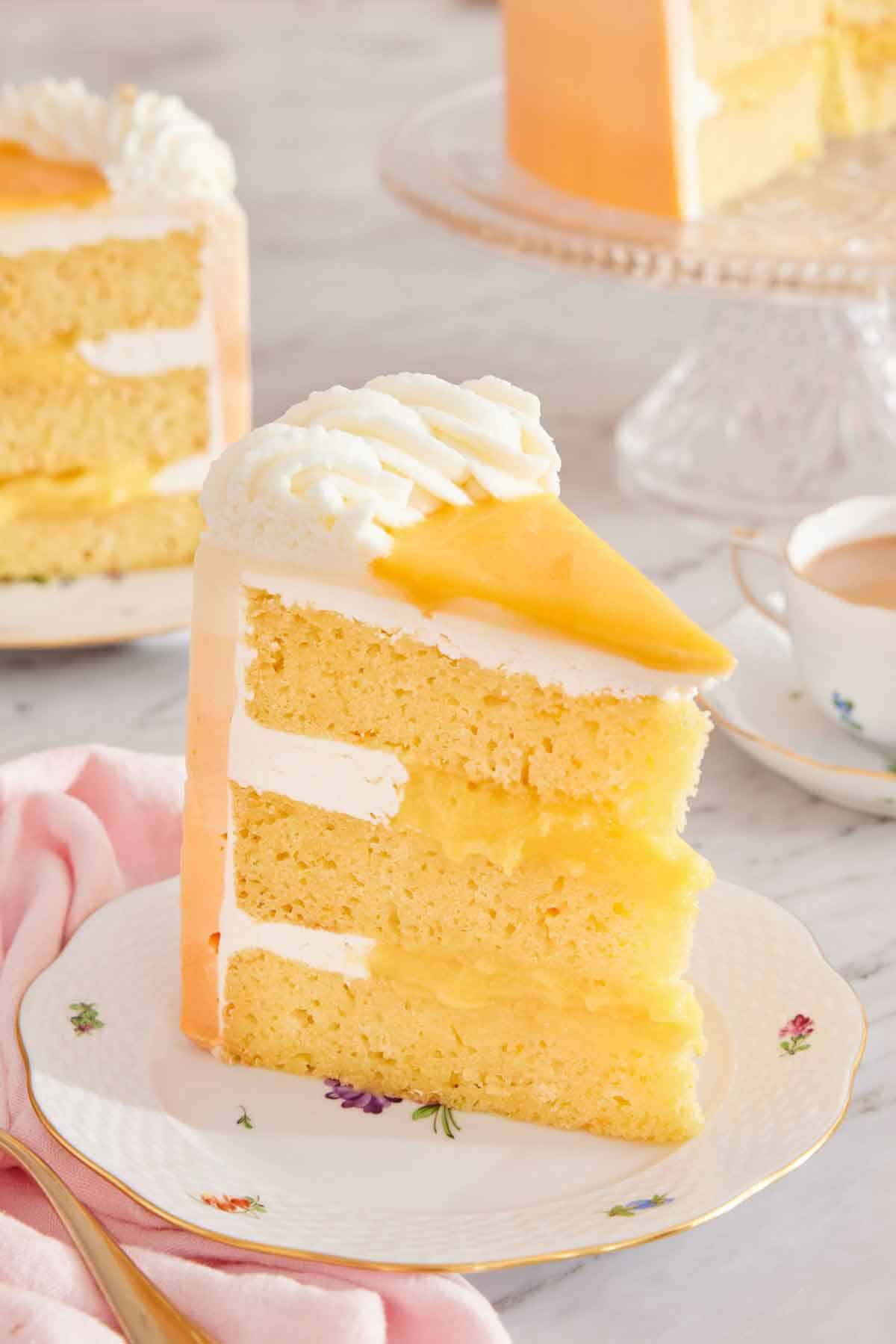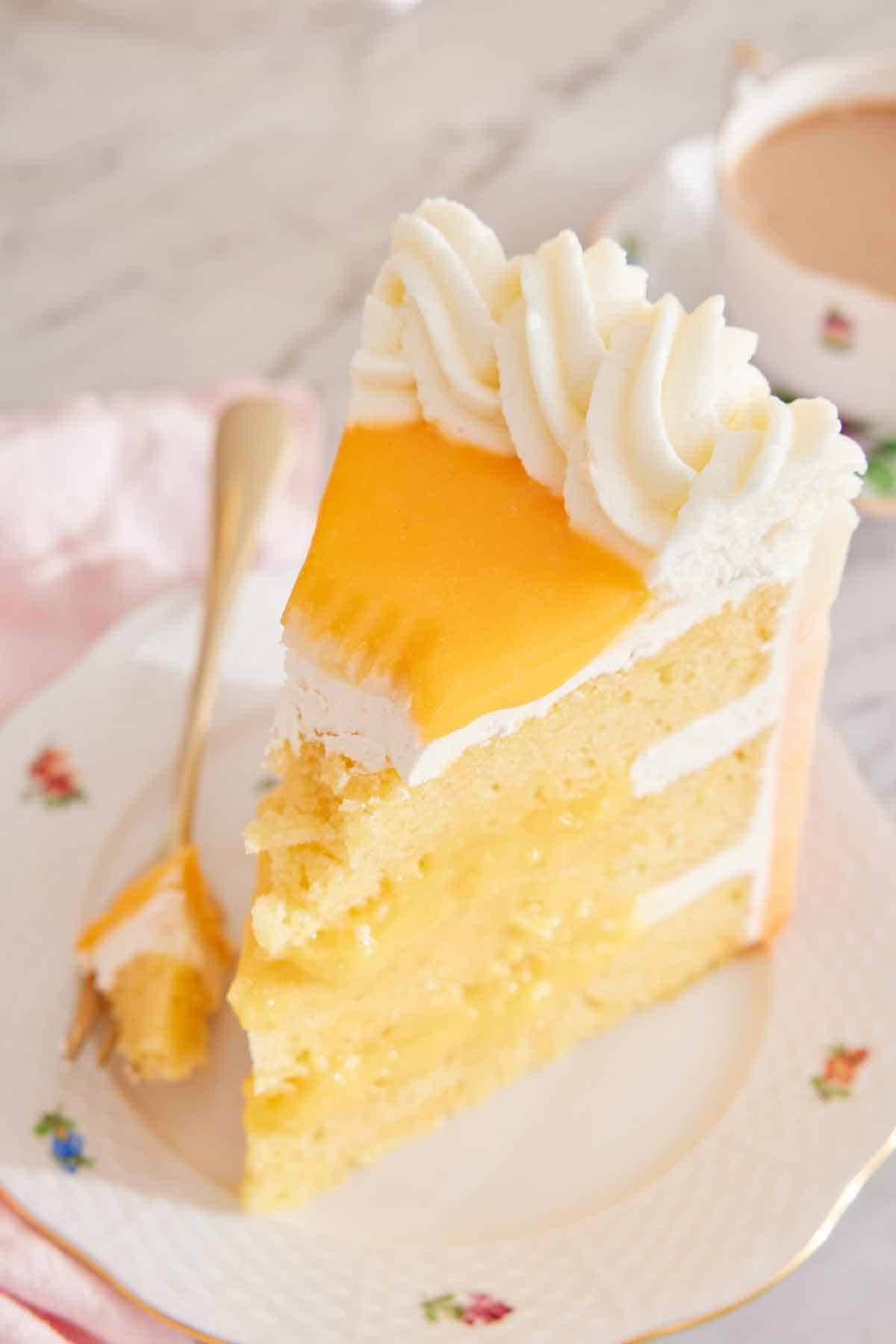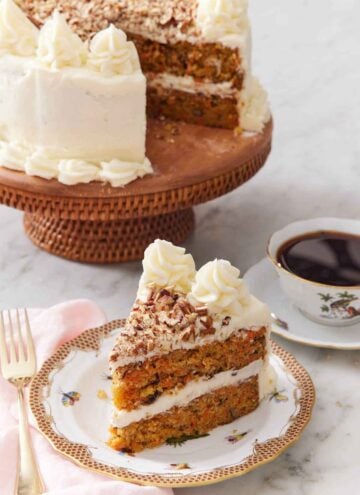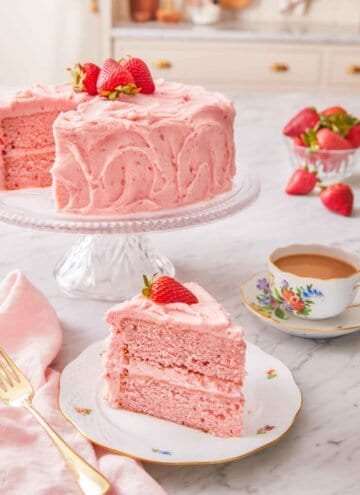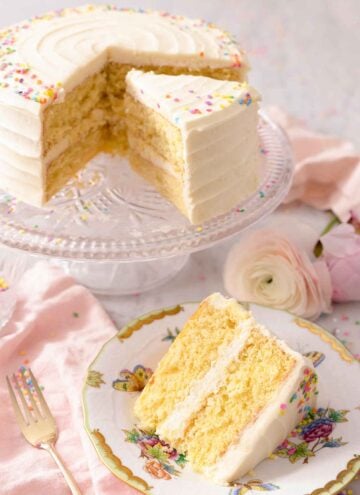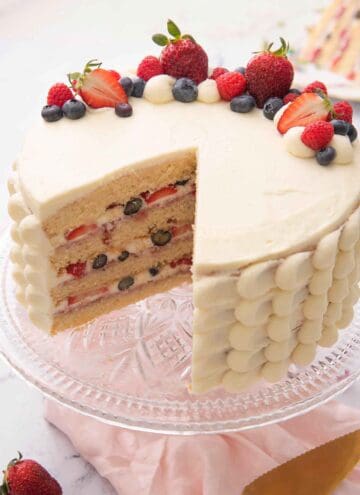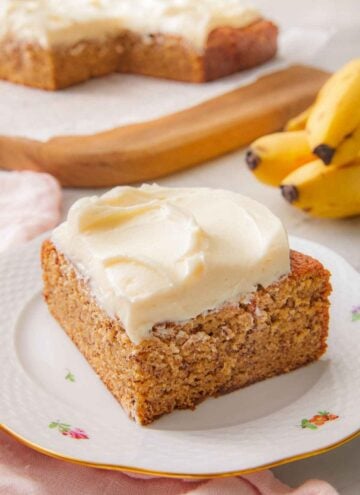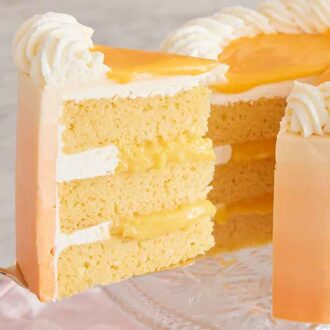It’s the perfect summer treat, as the sweet orange flavor makes for a refreshing bite that everyone will want more of. Not only is there orange flavor in the cake, but there’s also an orange curd filling as well, so each bite is full of sweet, tangy, and creamy flavors. If you want another orange-flavored dessert recipe, then try my orange cake recipe, orange cookies recipe, or cranberry orange scone recipe!
What You Need to Make This Recipe
Sugar — you will need sugar for every component of this cake, so make sure you have enough. The sugar sweetens the orange mixture, keeps the cake soft and moist, and is turned into a sugar syrup to create the meringue buttercream frosting. Flour — you do not need to use anything fancy for this creamsicle cake! All-purpose flour is all you need. Cornstarch — cornstarch works to thicken the orange mixture. Orange juice — fresh orange juice is ideal for the best orange flavor. Make sure to strain it to remove any pulp. You’ll need orange juice for both the filling and the cakes. Eggs — again, make sure you have plenty of eggs on hand! You’ll need four egg yolks to create the rich filling, six eggs for the cake, and eight egg whites for the frosting. Baking powder — make sure the baking powder is fresh. Using expired baking powder can lead to cake layers that don’t rise properly. Butter — this cake calls for both salted and unsalted butter. Double-check the wrapper before you use them! You want to make sure you’re using unsalted butter for the frosting so it’s not overly salty! Sour cream — using sour cream in the cake batter gives the cake a very tender and moist crumb, plus a delicious tangy flavor. If you don’t have sour cream then make your own using my homemade sour cream recipe. Food coloring — if you’d like to create an orange ombre frosting, then you’ll need orange food coloring.
How to Make Orange Creamsicle Cake
- In a medium heavy-bottom pot, whisk together the sugar, flour, and cornstarch. Whisk in the orange juice and egg yolks until well combined. Set over medium-high heat and cook, stirring constantly, until the mixture boils and becomes thick and clear, and begins to bubble.
- Remove from the heat and stir in the cubed butter. Transfer the filling to a bowl and press plastic wrap directly onto the surface of the filling and then chill until cold.
- Combine flour, baking powder, and salt in a large bowl.
- In a bowl of a stand mixer fitted with a paddle attachment, beat together the butter, sour cream, and orange zest on medium speed until well combined. With the mixer running, slowly add the sugar. Increase the speed to high and beat until the mixture is light and fluffy. Add the eggs, one at a time, mixing well and scraping down the sides between additions.
- With the mixer on low speed, add the flour mixture in three additions alternating with the orange juice to the butter mixture.
- Divide the batter among the greased 3 (8-inch) round cake pans. Bake for 30 minutes until a toothpick inserted in the middle comes out clean, rotating the cake pan positions after 20 minutes. Cool the cakes in the pans for 10 minutes, then invert the cakes onto a wire cooling and cool completely.
- Combine the egg whites and ⅓ cup of sugar in the bowl of a stand mixer fitted with the whisk attached. Beat on medium-high speed until soft peaks form. Carefully drizzle the prepared sugar syrup into the bowl while the mixer is still running. Once combined, add the salt and increase the speed back to medium-high. Continue beating until the meringue is no longer warm to the touch.
- With the mixer running, add the butter to the meringue, one piece at a time. Beat until the butter is combined and the frosting is smooth but stiff enough to spread. Beat in the vanilla.Transfer about 1 cup of the frosting to a piping bag fitted with an 869 or other decorative piping tip and about 1 cup in a piping bag with about ½ inch snipped off the end.
- Place one cooled cake layer on a cake stand or plate. Using the frosting in the piping bag without the tip, pipe a single ring around the top edge of the cake, creating a frosting barrier. Spread ½ of the filling over the cake to the frosting barrier. Top with another cake layer. Repeat with more frosting and the remaining filling. Place the remaining cake layer on top.
- Spread the remaining frosting on the outside of the cake in the desired pattern. Using the decorative piping tip, piping frosting on top of the cake. Refrigerate the cake for at least 30 minutes to set the frosting before slicing.
Pro Tips for Making This Recipe
If the tops of your orange creamsicle cake layers are domed, then use a serrated knife to cut off the top of the domes so you can stack them evenly. Alternatively, use cake strips to help your cake layers come out evenly. Cake strips work by keeping the outside edge of the pan cooler to ensure that the entire cake rises at the same rate, preventing a dome from forming in the middle. If you don’t want to buy cake strips, then see my post on how to DIY cake strips. I highly recommend using a scale to measure your flour, as it’s the most accurate method. If you don’t have a scale, fluff your flour with a spoon and spoon it into your cups before leveling it off with a knife. This method prevents you from overpacking the measuring cup. Make sure to sift the dry ingredients to remove any lumps. This will help to keep the cake’s crumb soft and light. When zesting an orange, stop zesting once you reach the white layer, as the white is bitter. You can get more juice from your oranges by bringing them to room temperature and then rolling them on the counter to loosen up the insides. To ensure no air bubbles are in the cake batter, gently tap the cake pans on the counter a few times. Eggs are easier to separate when cold, but egg whites whip up easier for the frosting when they are closer to room temperature. I recommend separating them in advance if you have the time so the whites can then come to room temperature. In addition, allowing the egg whites to sit gives them a chance to relax, which improves their elasticity during the whipping process. You also want room temperature eggs when you prepare the cake batter so it incorporates easily without overmixing. It is essential to have a clean and dry bowl for whipping the egg whites for the frosting. The egg whites also cannot contain any egg yolk. If the bowl is not completely clean or yolk-free, then it will prevent your frosting from setting up.
If you’ve tried this Orange Creamsicle Cake recipe, then don’t forget to rate the recipe and let me know how you got on in the comments below, I love hearing from you!

